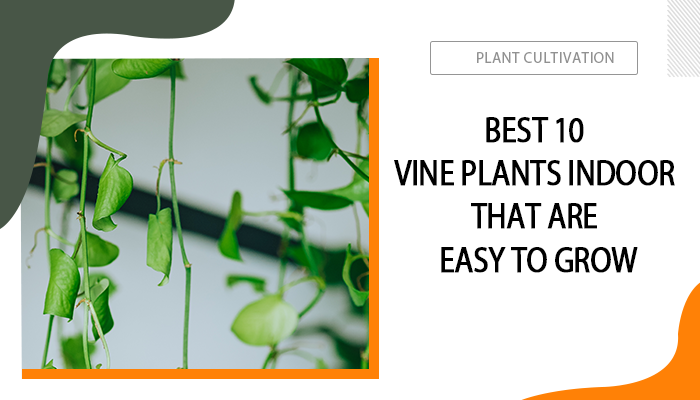Best 10 Vine Plants Indoor That Are Beginner-Friendly
If you are trying to add a touch of greenery and elegance to your indoor space, look no further than vine plants. These charming and versatile plants offer a range of benefits and come in various shapes, sizes, and colors. What’s the best vine plant option for indoor growers? From choosing the right vine species, say, hanging vine plants or low-light ones, to plant care tips, we've got you covered. So, let's dive into the wonderful world of the best 10 vine plants indoors.
Table of Contents
Pothos - Low Light Indoor Vine Plants
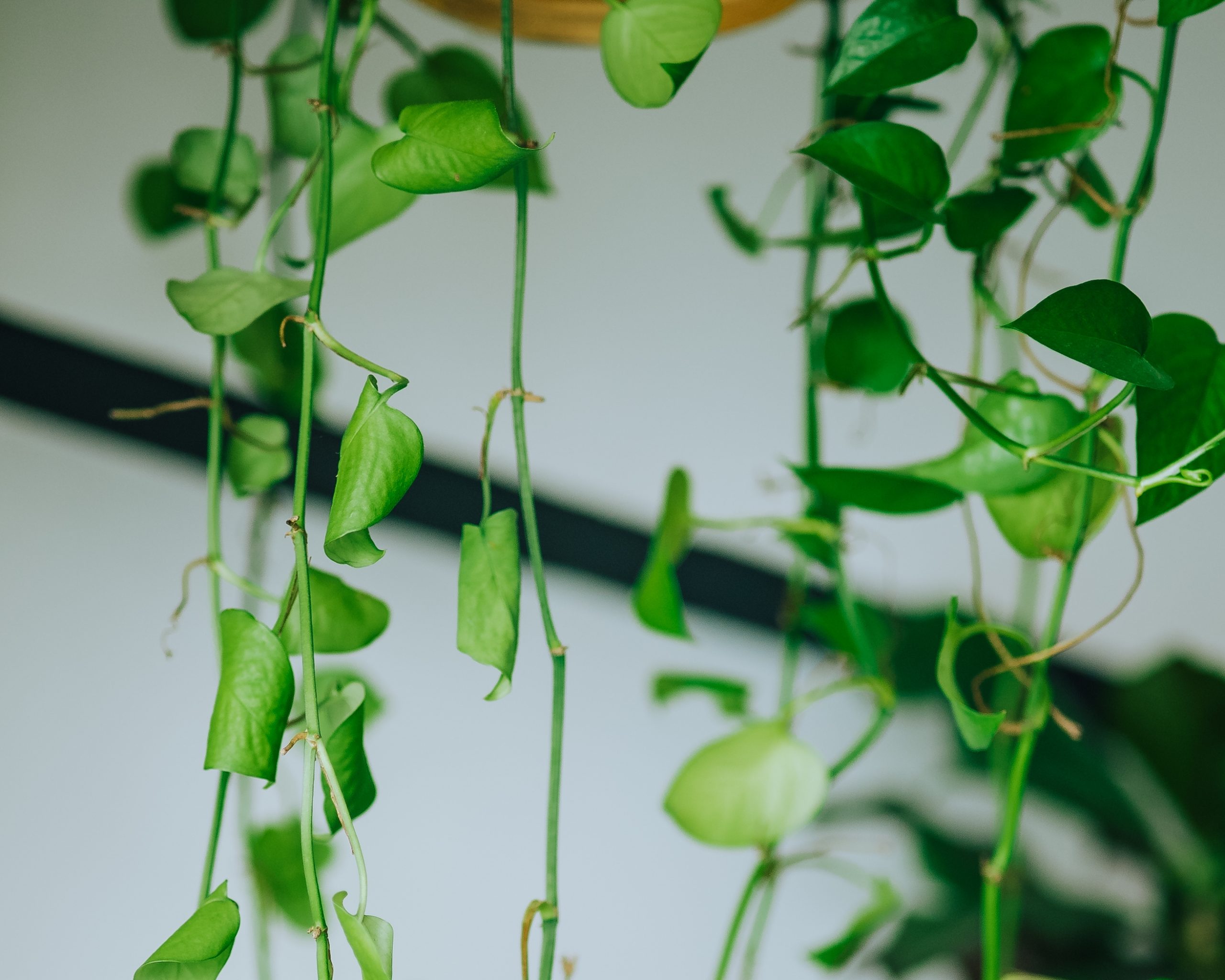
Also known as Epipremnum aureum, or Devil’s Ivy, this is a hardy and popular indoor vining plant. It thrives in a variety of lighting conditions, making it perfect for most indoor settings. Pothos vines can grow incredibly long, sometimes reaching over 10 feet indoors. They can be pruned to maintain a bushier appearance or allowed to drape gracefully from hanging baskets or shelves.
- Light: Tolerates low light and some can even grow under no direct sunlight.
- Temperature: 65-80°F (18-27°C).
- Humidity: Moderate; around 40-50%, but it's tolerant of a range.
Philodendron - Adaptable Vine Plant Indoor
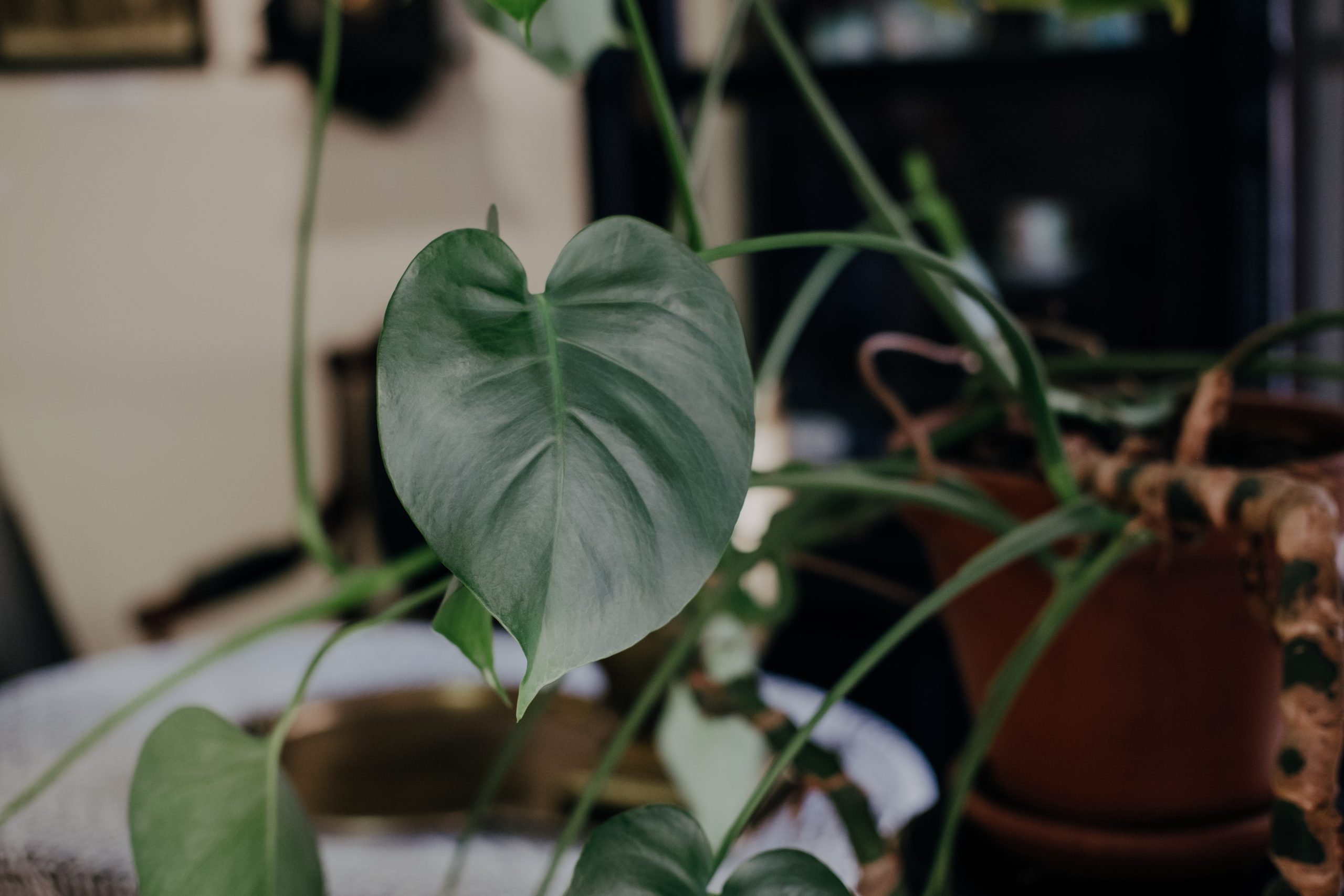
There are many varieties of Philodendron, like the Heartleaf Philodendron and the Split-leaf Philodendron, each with different leaf shapes and colors. They are generally adaptable, hardy, and easy to care for. Growing up to 8-24 inches long, Philodendrons can be trained to climb up supports or can be left to trail in hanging baskets or from shelves.
- Light: Bright to medium light is beneficial. Some varieties can tolerate below-moderate light conditions.
- Temperature: 65-78°F (18-25°C). Sometimes can even survive as low as 30 degrees Fahrenheit.
- Humidity: Prefers higher humidity but can tolerate average household humidity.
String of Hearts -Best Cascading Vine Indoor
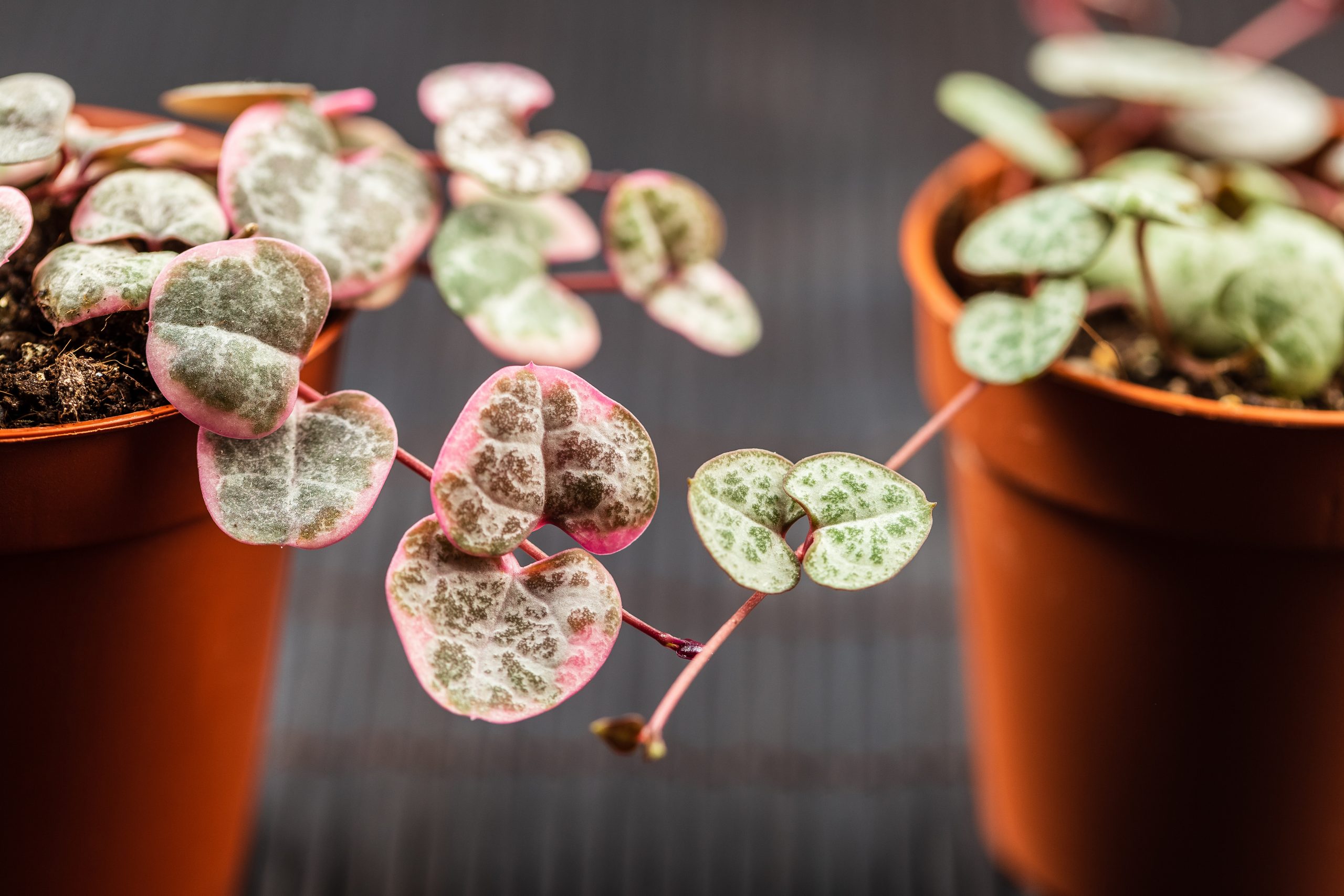
The String of Hearts, scientifically known as Ceropegia woodii, is a uniquely shaped trailing plant loved by many houseplant enthusiasts for its delicate appearance and relatively easy care. One advantage of this vine plant is that it only needs to be repotted every few years.
- Light: Bright and indirect light.
- Temperature: 70-80°F (21-27°C).
- Humidity: Low to moderate.
String of Pearls - Best Small Vine Plant Indoor
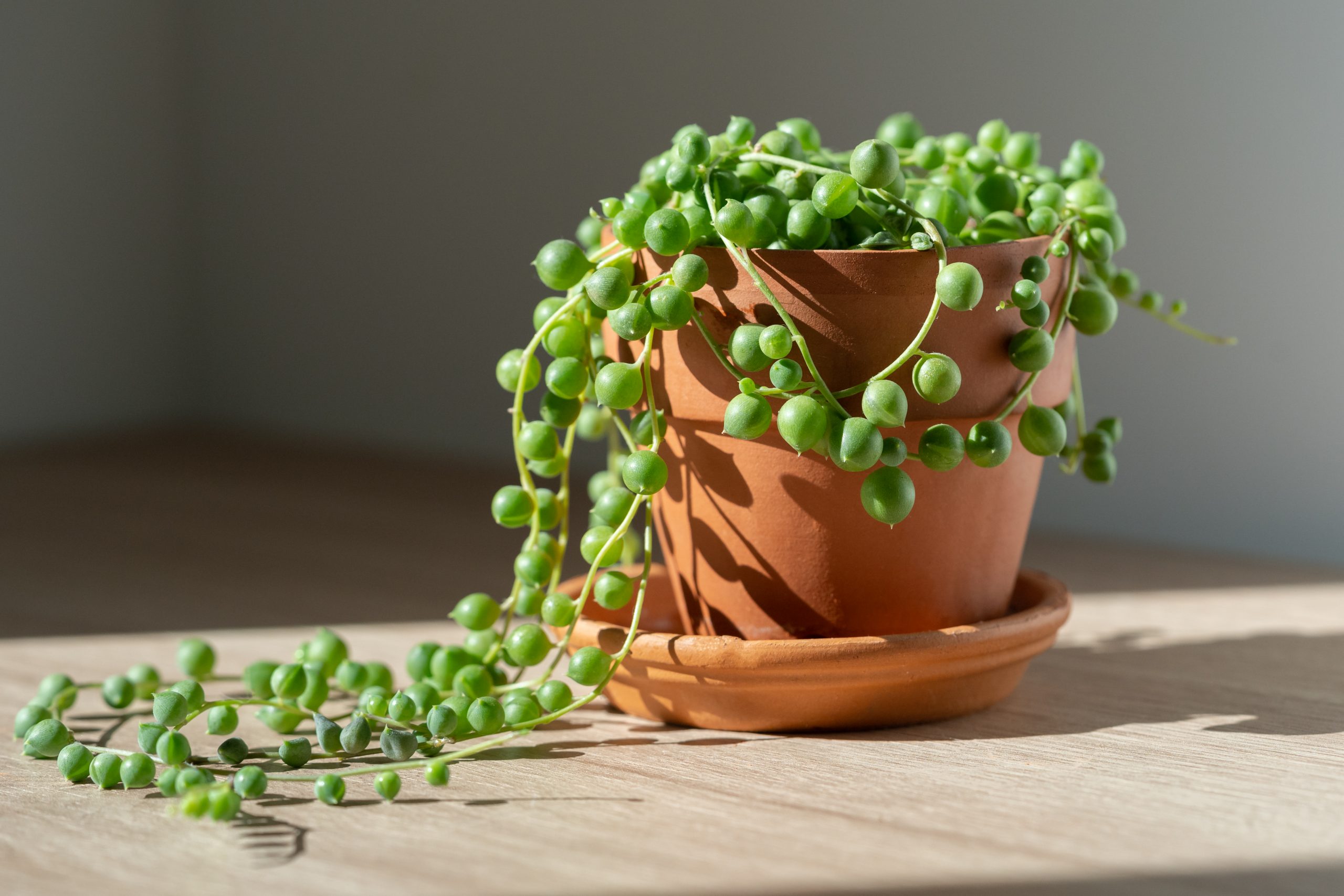
From the appearance, you can see a succulent vine with round, bead-like leaves that are quite unique. Compared with other indoor vine plants mentioned above, String of Pearl (Senecio rowleyanus) might require a bit more delicate care and patience. It’s also worth noting that this vine plant is more of a cascading vine than commonly seen climbing vines.
- Light: Bright sunlight. Able to thrive under indoor grow lights.
- Temperature: 70-80°F (21-27°C).
- Humidity: Low to moderate and does not need much water.
Hoya - Hanging Vine Plants Indoor
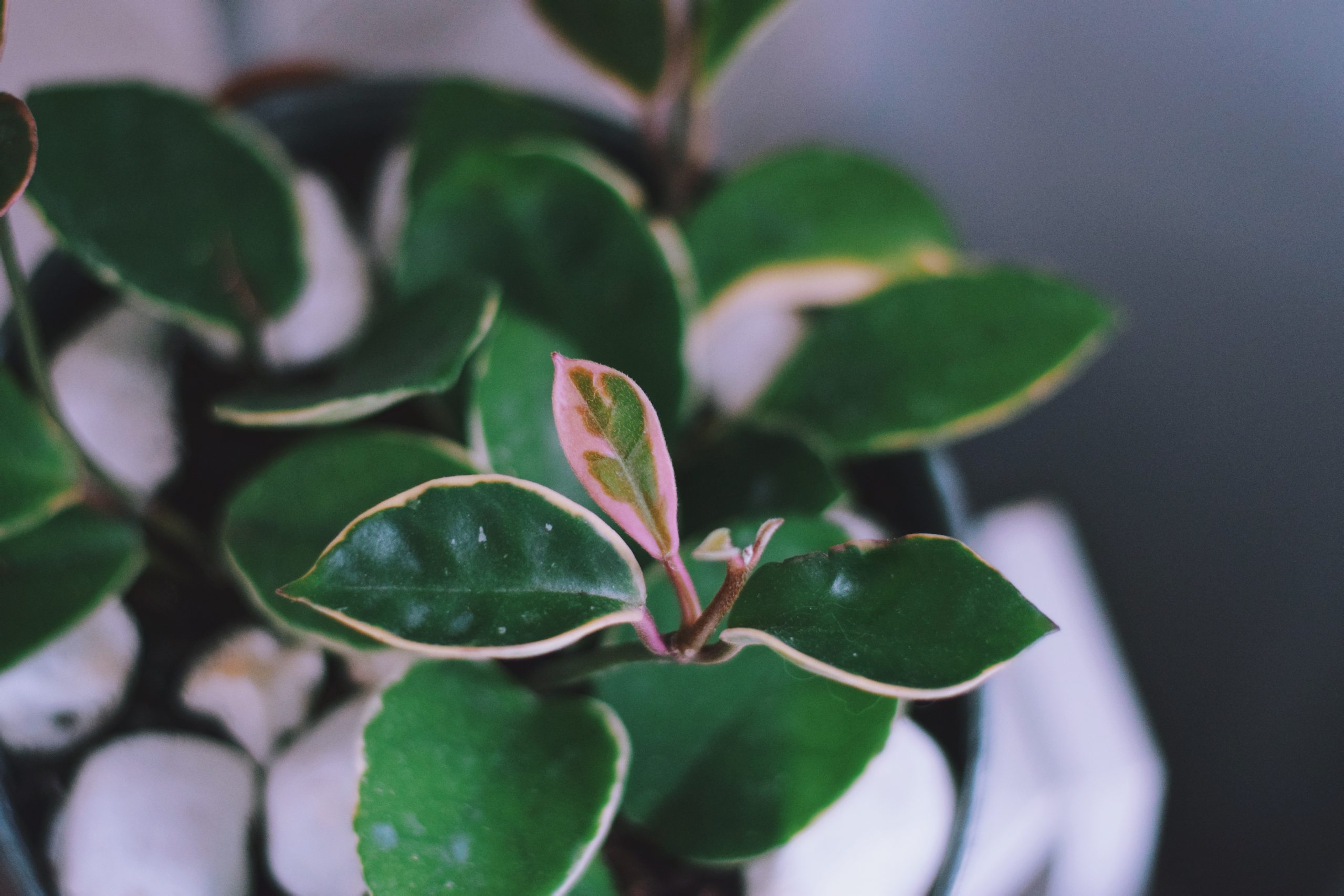
Hoyas, like the popular Hoya carnosa, are known for their waxy leaves and star-shaped flowers. And that’s why they are also called Wax Plant. Known as one of the hanging vine plants, Hoyas produce long, flexible stems that can be trained to climb or left to drape gracefully. They are relatively slow-growing but can become quite lush over time.
- Light: Tolerate some direct morning sunlight but should be protected from intense, scorching afternoon sun.
- Temperature: 65-80°F (18-27°C).
- Humidity: High; mist leaves regularly.
Notes: Known to bloom when root-bound, so don't rush to repot.
Swiss Cheese Plant - Foliage Indoor Vine Plant
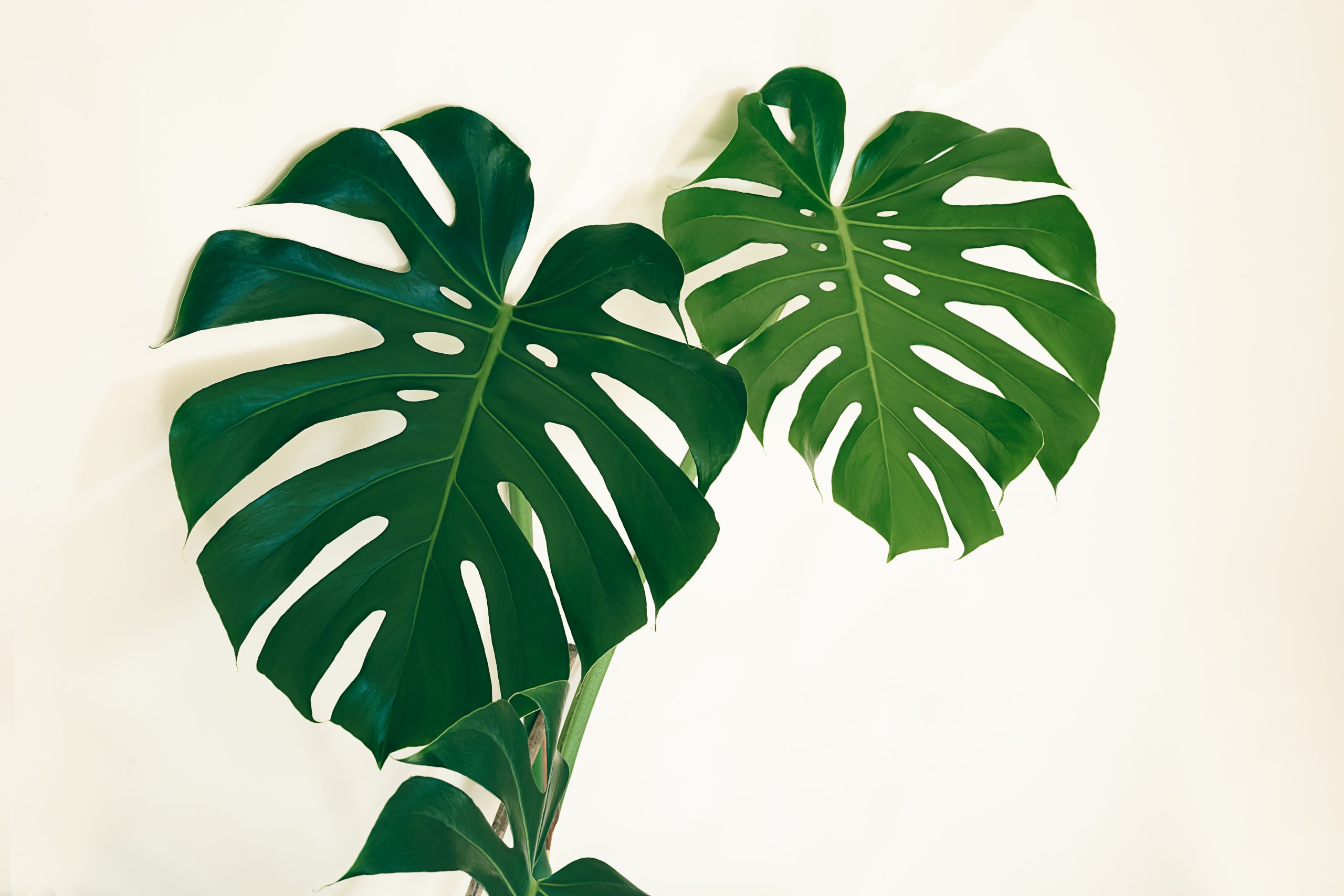
The Swiss Cheese Plant, also known as Monstera deliciosa, is a popular tropical vine known for its large, deeply split leaves.
- Light: Prefers bright, indirect light but can tolerate lower light conditions.
- Temperature: 68-86°F (20-30°C).
- Humidity: Prefers high humidity but is relatively adaptable.
Jade Vine - Rare & Exotic Indoor Vine Plant
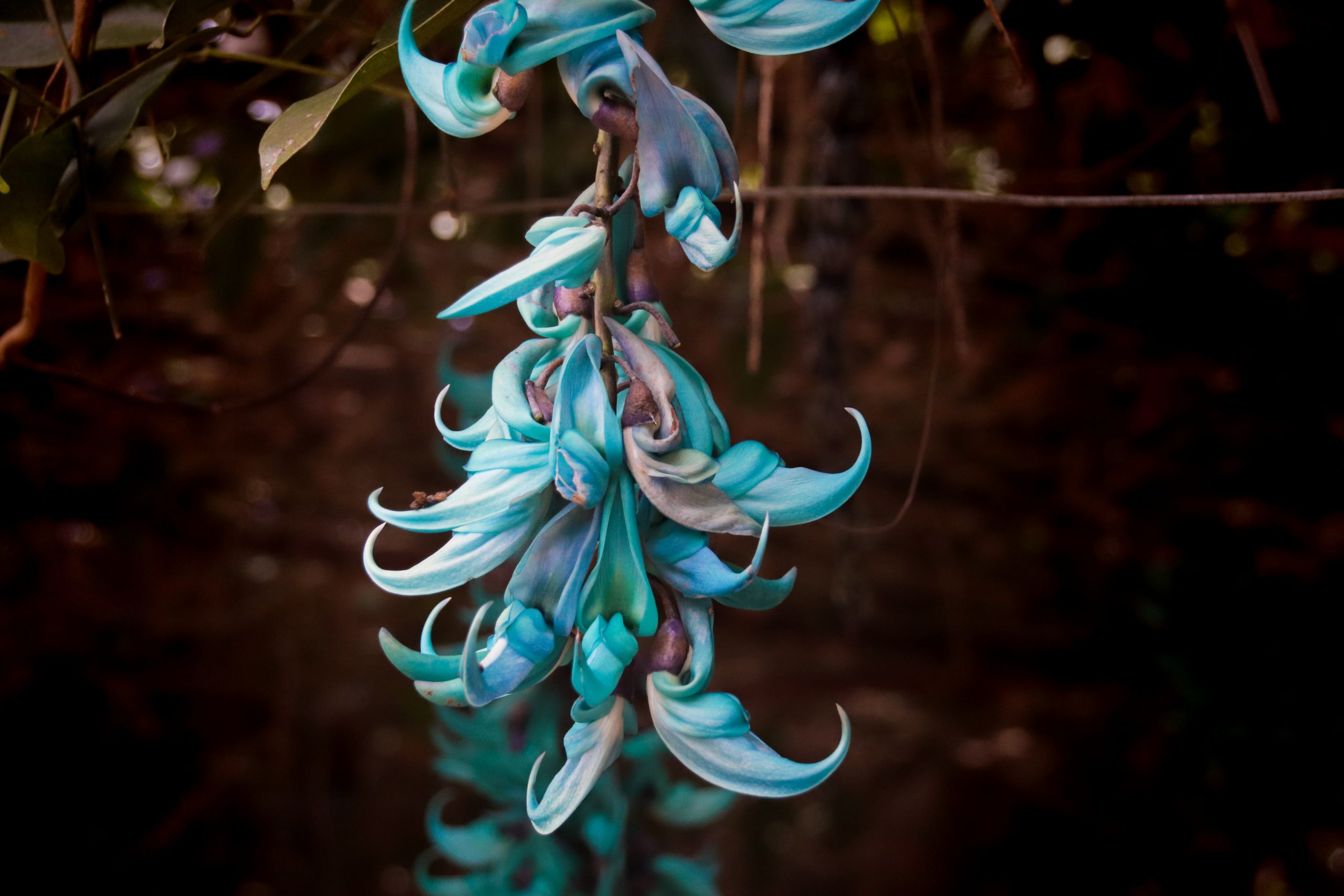
A more uncommon choice, the Jade Vine, botanically named Strongylodon macrobotrys, has turquoise flowers and is a beautiful and exotic addition to any collection. It's more challenging to care for than some other vines on this list given that Jade Vines require ample space and a strong support structure due to their heavy vines.
- Light: Prefer bright, indirect light with protection from intense sunlight.
- Temperature: 65-75°F (18-24°C).
- Humidity: High.
Arrowhead Vine - Versatile Indoor Vine Plant
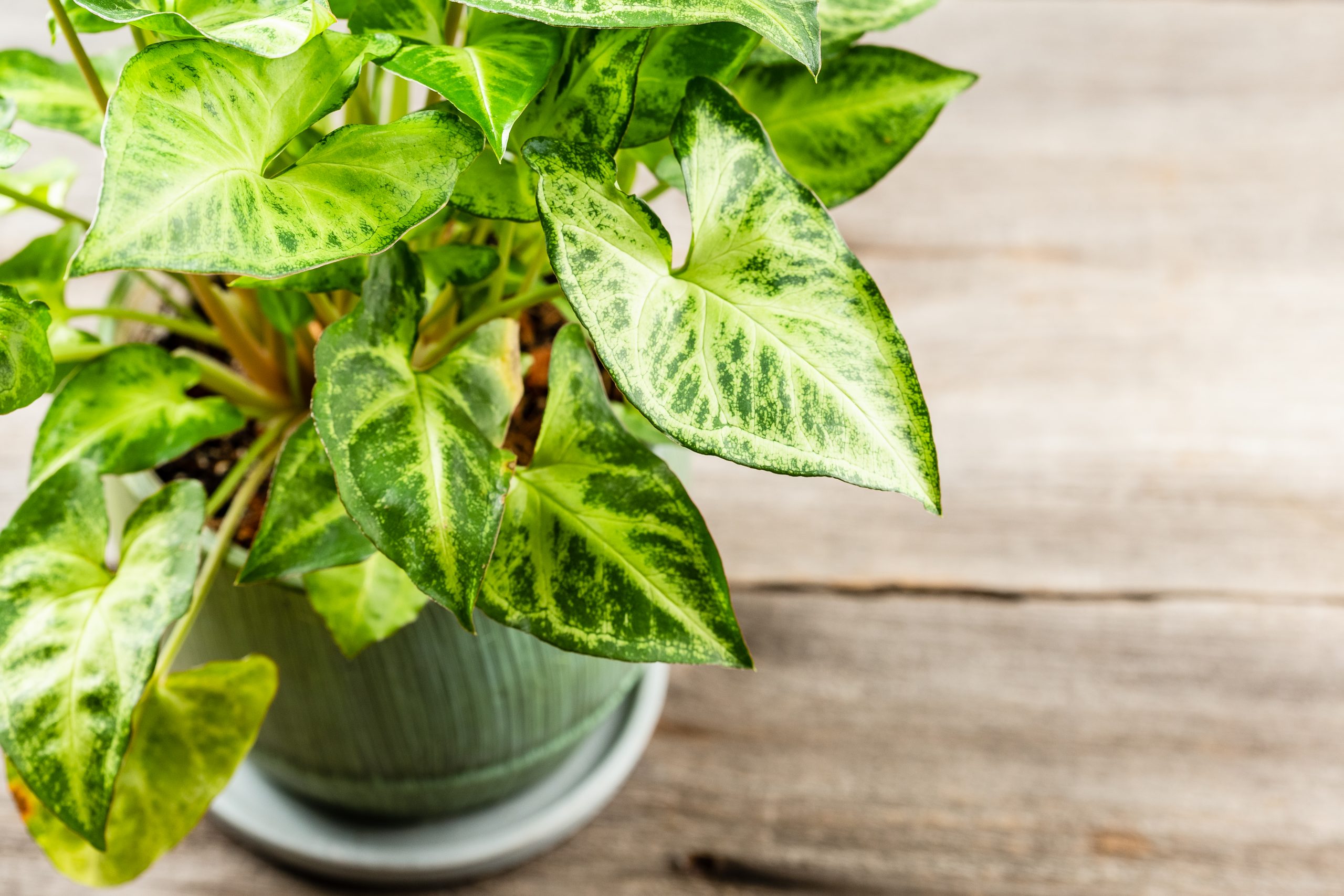
Arrowhead Vine, scientifically known as Syngonium podophyllum, is a popular choice for indoor vining plants, known for its arrowhead-shaped leaves. They can be grown as trailing plants or climbers and are available in various leaf colors and patterns.
- Light: Low-light tolerant and prefer bright indirect light.
- Temperature: 60-75°F (15-24°C).
- Humidity: Moderate to high.
English Ivy - Fast Growing Vine Plant
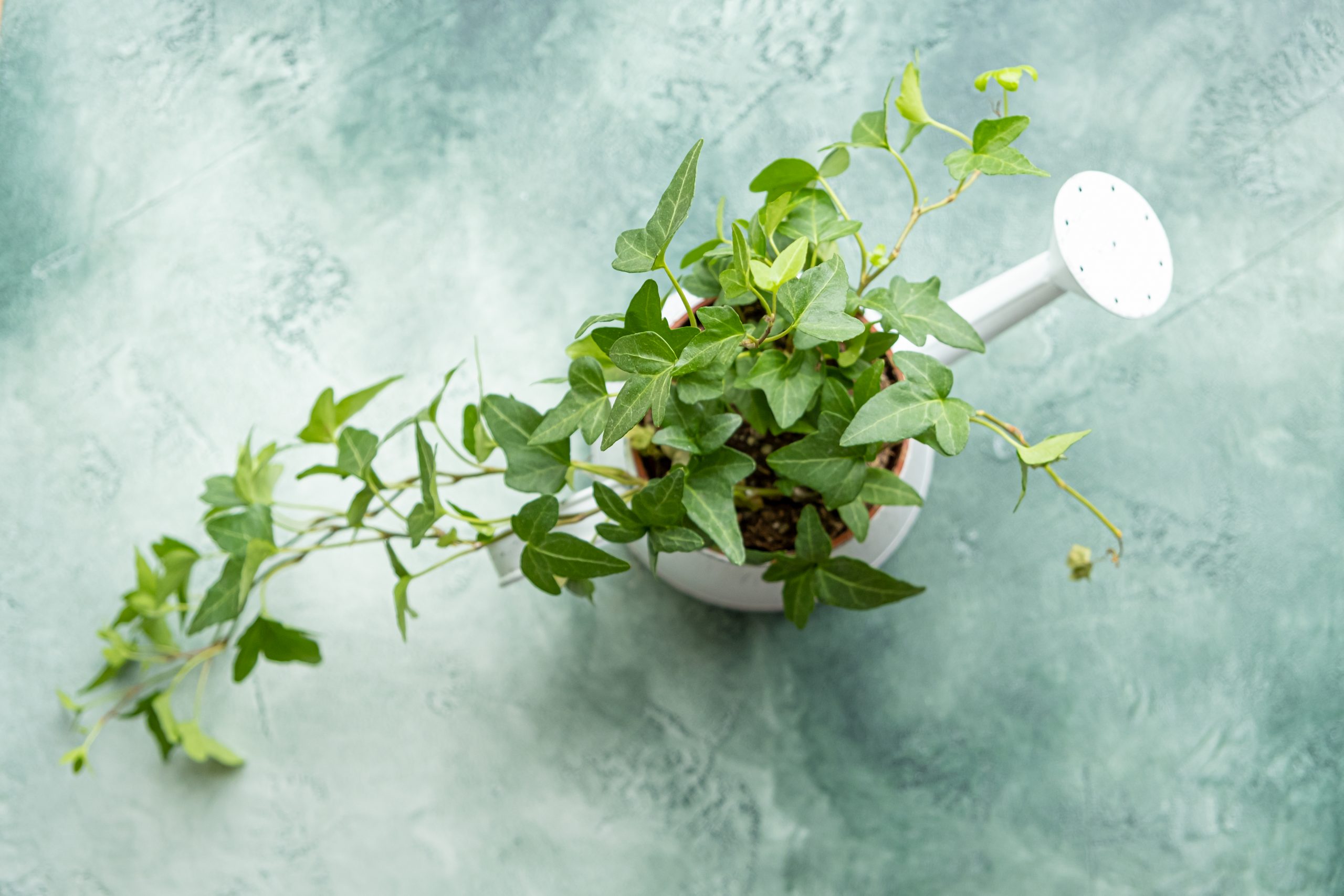
Ivy vine, also known as Hedera helix, is a classic and versatile vine known for its lush, evergreen leaves and trailing growth habit. If you are growing it indoors, do prune regularly as this vine plant can grow up quicker than you might expect.
- Light: Low-light tolerant, an excellent choice for rooms with limited natural light.
- Temperature: 60-75°F (15-24°C).
- Humidity: Moderate to high.
Notes: Toxic if ingested, that’s why you should keep it away from pets and children.
Maidenhair Vine - Delicate Vine for Indoor Growing
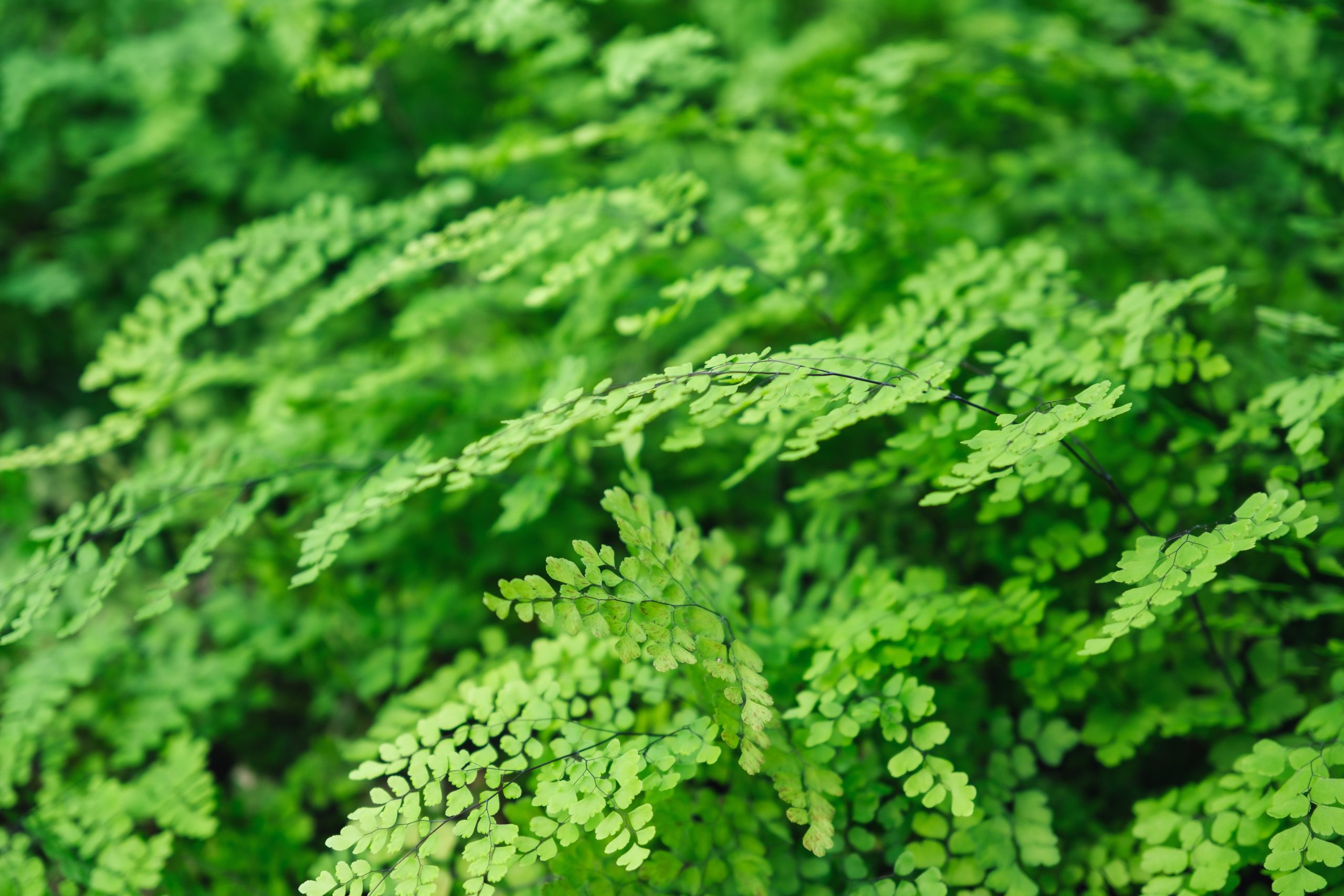
Maidenhair Vine, or Muehlenbeckia complexa, is a unique vining plant known for its fine, delicate, round leaves. Similar to English Ivy, Maidenhair Vine also has a fast growth rate and requires regular pruning to maintain its shape.
- Light: Low-light tolerant.
- Temperature: 65-75°F (18-24°C).
- Humidity: Moderate.
Tips for Vine Plants Indoor Care
Whether you are growing vines indoors or simply trying to keep them alive as long as you can, the following advice should help.
Lighting
As you can easily tell from above, most indoor vine plants prefer bright, indirect light. This means they should be placed near a window but not exposed to direct sunlight for extended periods. However, if your home doesn't receive enough natural light, you might consider using grow lights. Spider Farmer SF300 LED grow light is an excellent choice for home gardening if asked.
Watering
Water needs can vary between species, but a general rule is to allow the top inch or two of soil to dry out between waterings. Over-watering can lead to root rot. Use a well-draining potting mix and ensure pots have drainage holes to prevent standing water.
You may want to know: How Long Can Flowers Go without Water
Humidity
Many vine plants hail from tropical environments, which means they appreciate higher humidity. You can increase humidity by placing a plant humidifier nearby, misting the plant occasionally, or placing the pot atop a tray of pebbles with water. The water will evaporate and increase the humidity around the plant.
Pruning
Pruning your plants can help shape the plant and encourage fuller growth. You can trim back any leggy or overgrown vines. Regularly remove any yellow or dead leaves.
Repotting
As your vine grows indoors, it might become root-bound. This is when the roots take up so much space in the pot that the plant can't take in enough water or nutrients. If the roots start growing out of the drainage holes or if the plant seems to dry out very quickly after watering, it’s suggested to repot into a slightly larger pot.
FAQs about Vine Plants Indoor
- What is the best indoor vine plant?
The best indoor vine plant depends on your preferences and the specific conditions in your home. Some popular choices include Pothos, Philodendron, and Snake Plant for their ease of care. However, other options like Hoyas, String of Hearts, and Monstera are also beloved by indoor gardeners for their unique shapes and characteristics.
- Do vines need sunlight to grow?
Yes, most vine plants require some amount of sunlight to grow and thrive. While some of the vine plants indoors are low-light tolerant, they generally do best in bright, indirect light. Proper lighting is crucial for their photosynthesis and overall health.
- Can you have vines in your house?
Sure, you can definitely have vine plants in your house. Many vine plants are well-suited for indoor environments and can thrive if provided with the right care mentioned above.
- What is the easiest vine to grow?
Pothos (Epipremnum aureum) is often considered one of the easiest indoor vine plants to grow. It's highly adaptable to different light and humidity levels, making it suitable for beginners. Other easy-to-grow options include Heartleaf Philodendron (Philodendron hederaceum).


